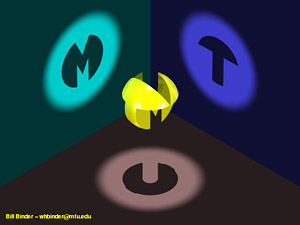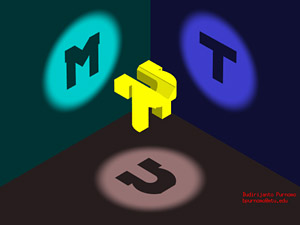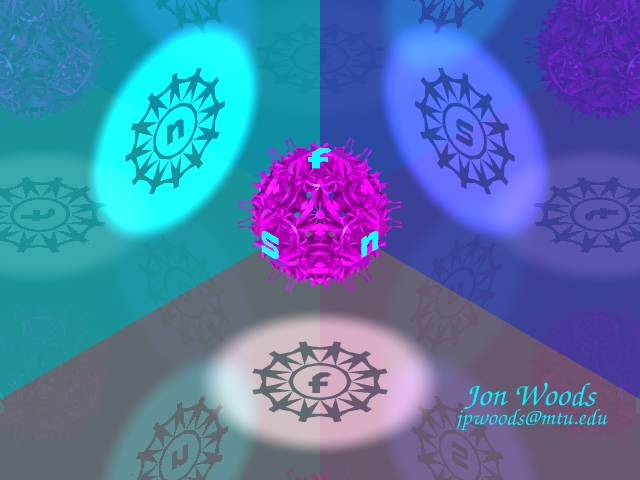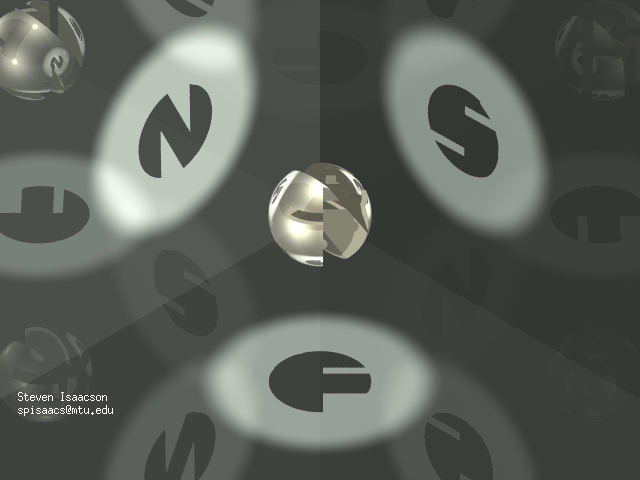This is a raytracing practice exercise and has two components.
Scene of Your Choice
Use POV-Ray to create a scene and trace it. You scene must include all primitives (i.e., planes, spheres, cylinders, cones, boxes, and tori). You may use whatever colors, ambient, diffuse, phong, phong size, reflection, refraction, etc. As long as it is creative and imaginative anything can be there, which include textures available in POV-Ray, constructive solid geometry, etc. Refer to POV-Ray Tutorial for your initial study and use the POV-Ray guide for your ultimate reference.
Constructive Solid Geometry
Do the problem on this page. However, instead of GEB you should use MTU. If you like, you may replace the cube with a sphere with center at <0, 0, 0> and radius 5. The following shows two examples, one using a sphere and the other a cube. Note that the orientation of letter U in the left image is better.

|

|


You cannot use anything from the Internet in this exercise. You must create your own scene!
My expectation is simple: Use all elementary features (e.g., shapes, material properties, lighting, reflection, refraction, etc) plus constructive solid geometry (CSG) to create a wonderful scene. I will give more weight to scene design, creative use of color, material properties, lighting, reflection and refraction, and modeling with constructive solid geometry (CSG). A dull and so-so image is just OK and won't get a high score. Moreover, use POV-Ray only and no other tools should be used.
Submit your work by e-mail.
During this week, you are welcome to send me your preliminary work for comment. You may use my comments to improve your work. Hope to see some wonderful images from you.